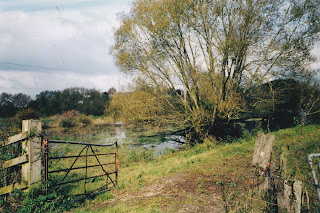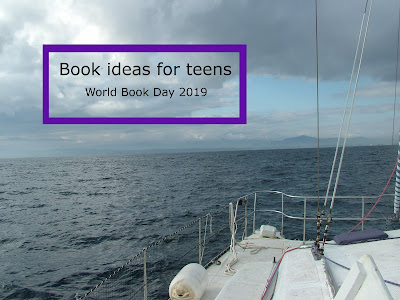Worse things happen at sea
Ventilation is always good in a boat. Unplanned holes
letting a draft in are, however, less welcome. This week a boat made a slight
mistake which left them in the wrong part of the marina. By the time they
realised it was a dead end and that there was barely enough room to turn, the
wind and current had taken over the steering. The end result was the boat
plunging its anchor into the side of Tarquilla and pin-balling off of three
others. All this was watched in horror by an audience who were unable to get to
the little boat to help in any way.
Most importantly for us, the hole was a good three feet above the waterline. Also, due to a last minute change of plan, no-one was on board at the time and no-one was injured. The Skipper has had the saw and epoxy out again and having put in a temporary patch overnight he has repaired the hull. It took him a couple of days lying on the deck, dangling over the water but it is now fixed and Tarquilla has another scar telling the story.
 |
| The outside of the hull |
As we returned from the school run we were greeted by the
news. The marina staff had already checked the vessels involved and the
bouncing boat was safely moored in the correct place with two very shaken
sailors onboard. From outside we could see the hole, from inside we could see
daylight. The anchor had punched straight through three layers of plywood and
an outer layer of fibreglass.
 |
| Inside the hull |
Most importantly for us, the hole was a good three feet above the waterline. Also, due to a last minute change of plan, no-one was on board at the time and no-one was injured. The Skipper has had the saw and epoxy out again and having put in a temporary patch overnight he has repaired the hull. It took him a couple of days lying on the deck, dangling over the water but it is now fixed and Tarquilla has another scar telling the story.
 |
| Dead end warning at the end of the pontoon |
I’ve written before about how much I hate coming alongside
and we have had our fair share of ending up in dead ends and small spaces. In
both L’Aber W’rach and St Malo we had to be manoeuvred carefully and slowly by
the marina work boat to get out of the space we had been put in. Boats are not
like cars. You can’t just point it in the right direction and put the brakes on
to stop. The currents under the water and the wind over the water are in
control. You can use them to help you, you have to assess them and take them
into account but they get the final word about which way you go.
Skippers note: My favourite current has to be the one which
pushes you off the outer pontoon at Getxo (you have to be born there to be able
to say it) Marina in Bilbao whether the
tide is coming in or out so just when you line up and the crew throws the
rope you’re six feet further away and they miss, so you start all over again
and hope no-ones watching. We came in during that three hour section of the day
the Spanish call lunchtime so no-one was watching, which is just as well. The
worst was Hendaye, less said the better but we were glad we were insured.
Currents are inexorable and if the underneath of your boat is the right shape
then they will take charge if you’re
not ready for them.




Comments
Post a Comment